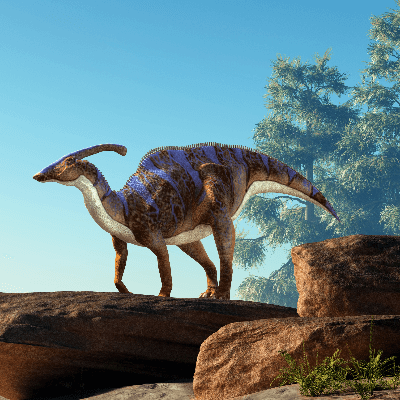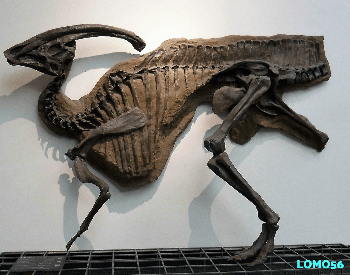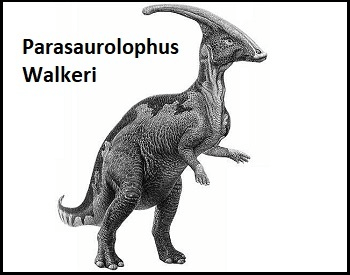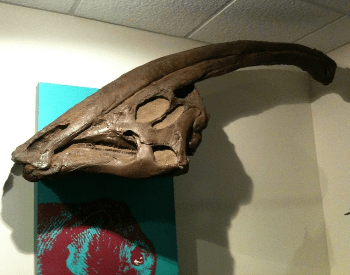
- Species Type: Parasaurolophus Walkeri
- Type of Dinosaur: Ornithopoda
- Period: Late Cretaceous Period
- Diet: Foliage (herbivorous)
- Lifespan: Unknown
- Length: 31 feet (average)
- Weight: 2.8 tons (average)
16 Parasaurolophus Facts for Kids
- The Parasaurolophus was discovered in 1920, by a University of Toronto field party along the Red Deer River in Alberta, Canada.
- The Parasaurolophus got its scientific name Parasaurolophus walkeri in 1922, by William Parks.
- William Parks named the Parasaurolophus walkeri in honor of Sir Byron Edmund Walker, Chairman of the Board of Trustees of the Royal Ontario Museum.
- The name Parasaurolophus means: “Near Crested Lizard”.
- The name Parasaurolophus is pronounced: “par-ah-SAWR-OL-uh-fus”.
- The Parasaurolophus was part of a group of dinosaurs known as ornithopods.
- They lived in the Late Cretaceous Period between 73 and 76.5 million years ago.
- The holotype specimen (ROM 768) has an estimated length of 31 feet.
- The holotype specimen (ROM 768) has an estimated weight of 2.8 tons.
- Parasaurolophus was a herbivore and ate a wide variety of vegetation, some as high as 13 feet off the ground.
- The Parasaurolophus had hundreds of teeth that were stacked into multiple rows. As teeth were wore down, new ones would work their way up.
- One of the most notable features of a Parasaurolophus is their long, curved cranial crest, that extended back and pointed down towards their shoulders.
- Paleontologists think the Parasaurolophus walked on four legs (quadrupedal), but that it also had the ability to walk on two legs (bipedal).
- Paleontologists aren’t sure what the cranial crest was used for. They believe it may have been used for mating, identifying sex, enhanced hearing or helping to regulate their body temperature.
- There are two other species of Parasaurolophus besides P. walkeri, and they are P. tubecin and P. cytrocristatus.
- Fossilized Parasaurolophus specimens have been discovered in North America, both in Canada and the United States of America.
Parasaurolophus Pictures

A photo of a Parasaurolophus walkeri wall exhibit.Credit: Lothar Monshausen / Flickr

A sketch of a Parasaurolophus walkeri dinosaur.Credit: Natural History Museum, London

A close-up photo of a Parasaurolophus walkeri skull.Credit: Mike / Flickr
Additional Resources on Parasaurolophus
- Parasaurolophus – Wikipedia – Discover more Parasaurolophus facts on the Wikipedia Website.
- Parasaurolophus – Perhistoric Wildlife – Discover some wild facts about the Parasaurolophus on the Perhistoric Wildlife website.
- Ontogeny in the tube-crested dinosaur Parasaurolophus (Hadrosauridae) and heterochrony in hadrosaurids – Ontogenetic changes in the vertebrate skull have numerous functional, ecological, and behavioral consequences.
